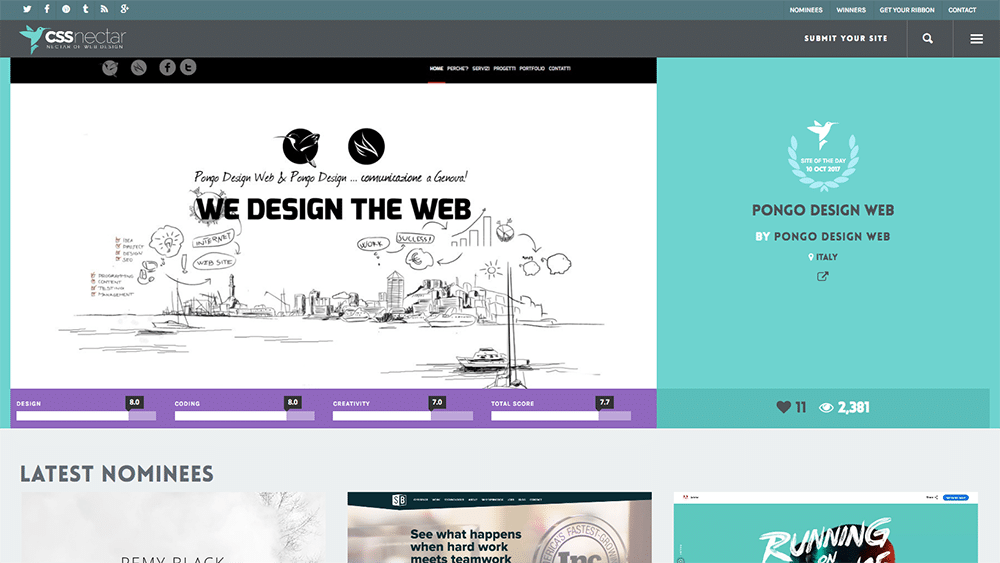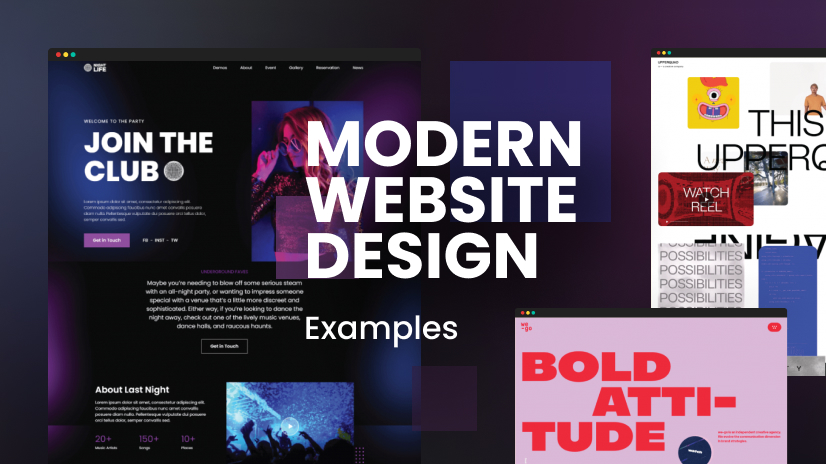The Relevance of Responsive Internet Site Design in Today's Digital Landscape
In a period where digital communications are significantly performed across a myriad of devices, the value of responsive internet site design can not be overemphasized. As mobile web traffic proceeds to surge, services that focus on receptive design setting themselves to fulfill individual expectations successfully.
Boosted Individual Experience
Enhancing user experience is an essential goal of receptive site layout. A responsive web site adapts effortlessly to various screen dimensions and tools, making sure that users experience constant use no matter whether they are accessing the site via a desktop, tablet computer, or smartphone - Website Design. This flexibility is vital in today's electronic landscape where individuals expect immediate access to information and services
Receptive layout improves navigating by optimizing format and content presentation based upon the tool being utilized. This causes minimized scrolling, simplified menus, and suitably sized images, which all add to an extra intuitive surfing experience. Additionally, responsive internet sites load quicker on smart phones, decreasing waiting times that can bring about individual aggravation and possible site abandonment.
Including receptive design not only improves complete satisfaction yet also promotes user engagement and retention. When individuals discover web material that is simple to accessibility and browse, they are most likely to return and recommend the site to others. Ultimately, investing in responsive site design shows a commitment to conference customer requires, cultivating a favorable relationship between the web site and its target market, and improving general brand name credibility.

Enhanced Search Engine Optimization Positions
Among the substantial benefits of receptive web site style is its capability to improve search engine optimization rankings. Browse engines focus on web sites that give an optimal individual experience throughout numerous devices. A receptive design, which adjusts seamlessly to various display dimensions, lowers bounce prices and motivates longer site gos to-- two crucial elements that influence search engine algorithms.
Web sites that are not enhanced for mobile gadgets may face charges, leading to lower exposure in search outcomes. By implementing receptive design, services ensure that their material is engaging and easily accessible, regardless of the device being used.
Additionally, a single link for both desktop computer and mobile versions streamlines the indexing procedure for search engines, as they can conveniently comprehend the website and crawl structure. This unified strategy eliminates duplicate material concerns, even more boosting SEO end results. Inevitably, spending in a receptive site layout is a calculated relocation that supports higher online search engine rankings, driving natural web traffic and enhancing overall online presence.
Increased Mobile Website Traffic
The surge in mobile website traffic has become a specifying characteristic of modern web use, essentially reshaping exactly how organizations approach their on-line presence. With an increasing number of users accessing the web through mobile phones and tablet computers, companies need to prioritize responsive internet site style to make certain ideal customer experiences throughout diverse tools.
As mobile website traffic remains to increase, services that stop working to adjust risk alienating a significant portion of their target market. Website Design. A responsive style allows sites to automatically adapt to various display sizes and resolutions, offering seamless navigating and accessibility. This flexibility is essential, as poor mobile experiences can result browse around this site in high bounce rates and lost conversions
Additionally, the value of mobile traffic is highlighted by online search engine like Google, which focus on mobile-friendly sites in their ranking formulas. This change stresses the need for services to not only improve their mobile interfaces but also to consider user behavior and choices when producing electronic material.
Eventually, embracing receptive site layout not only deals with the expanding mobile target market however likewise reinforces brand name trustworthiness and involvement, placing organizations for success in an increasingly mobile-centric electronic landscape.
Cost-Effective Maintenance
Maintaining a responsive site style can dramatically cut down on long-term expenses for organizations. By implementing a single style that adapts to numerous gadgets, companies get rid of the need for multiple site variations, decreasing growth and maintenance costs. This streamlined strategy not only saves sources but likewise streamlines enhancements and updates.
With a my explanation receptive style, businesses can concentrate on enhancing one site instead of managing numerous, ensuring uniformity in branding and individual experience throughout all platforms. Additionally, responsive internet sites tend to place much better in online search engine, possibly reducing the expenses connected with search engine optimization initiatives.
When it pertains to updates, a combined platform indicates that brand-new functions or material can be presented without the problem of adjusting numerous distinct websites. This efficiency permits for quicker turnaround times, enabling organizations to reply to market changes or customer needs swiftly.
Furthermore, as technology advances and new devices emerge, businesses with receptive designs will certainly encounter less challenges in adjusting their websites. This future-ready approach decreases the chance of sustaining unforeseen costs connected with redesigns or platform movements. By prioritizing receptive design, firms can achieve long-lasting financial sustainability while preserving an affordable edge in the digital landscape.
Future-Proofing Your Website
Preparing for the future of website design is important for companies aiming to stay pertinent in an ever-evolving electronic landscape. As innovation advances, individual assumptions shift, requiring websites that not just look enticing but likewise operate effortlessly across numerous gadgets and systems. Future-proofing your site entails carrying out adaptive layout concepts that accommodate arising innovations, such as voice search and fabricated knowledge.
To attain this, organizations ought to focus on versatile layouts, scalable graphics, and marginal filling times. Embracing a mobile-first method makes sure optimum efficiency throughout the raising variety of mobile customers. Website Design. Furthermore, integrating progressive web applications (PWAs) can improve customer experiences by giving fast, trusted access despite network problems.
On a regular basis updating content administration systems and frameworks is important to maintain security and capability. Furthermore, utilizing responsive style principles allows websites to readjust effortlessly to new tools and screen sizes. Organizations has to additionally think get redirected here about access requirements to make sure inclusivity for all individuals.
Final Thought
In final thought, responsive web site design plays a critical role in optimizing individual experiences in the modern electronic landscape. Ultimately, spending in receptive design makes sure adaptability to future technological improvements, solidifying brand name reliability and promoting long-lasting on-line visibility in an ever-evolving electronic environment.

In addition, as innovation progresses and brand-new devices arise, businesses with responsive styles will encounter fewer obstacles in adjusting their sites.In verdict, receptive internet site design plays a crucial duty in enhancing customer experiences in the modern digital landscape.